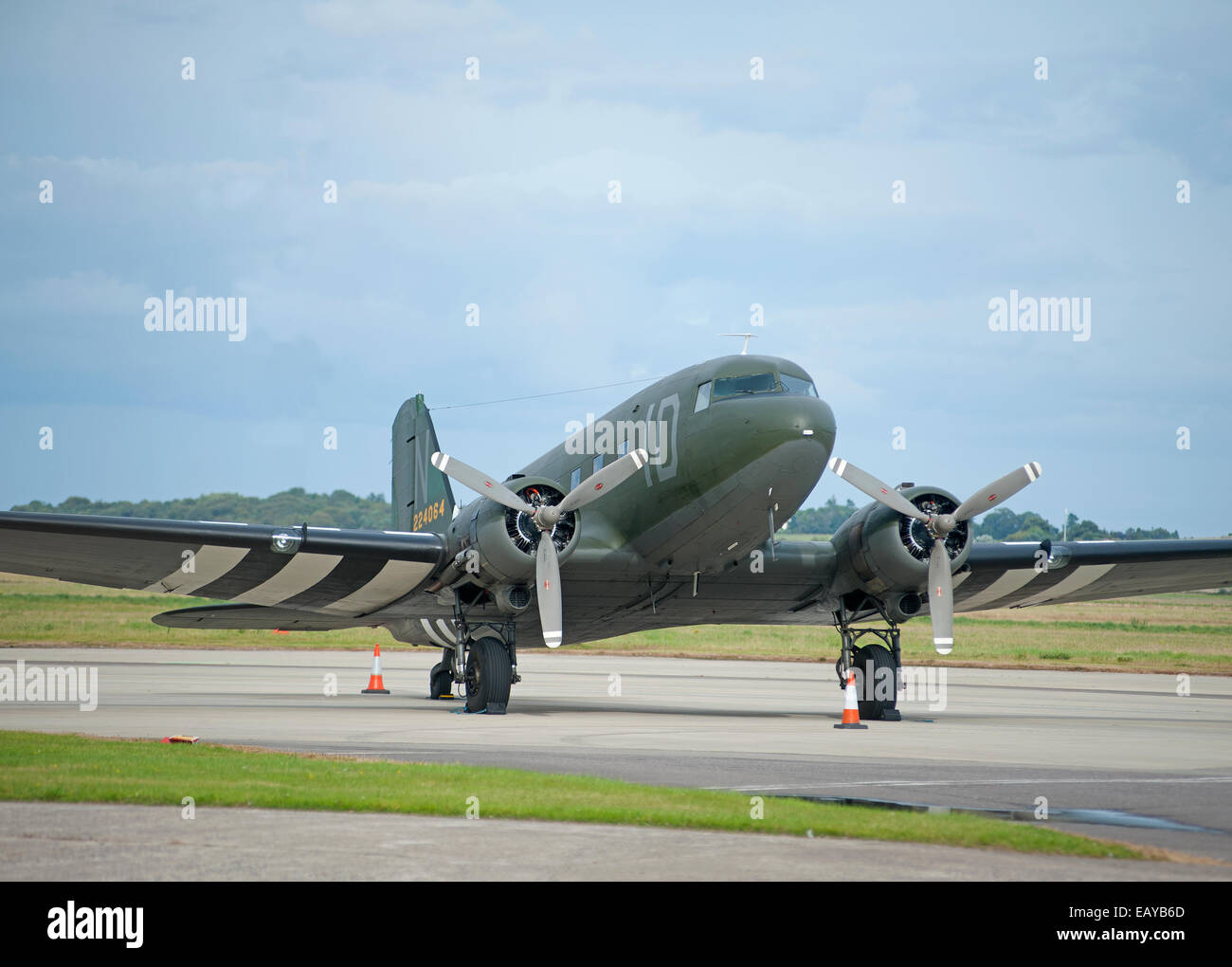Douglas C-47A Skytrain (DC-3)

Image details
Contributor:
David Gowans / Alamy Stock PhotoImage ID:
EAYB6DFile size:
70 MB (1.7 MB Compressed download)Releases:
Model - no | Property - noDo I need a release?Dimensions:
5848 x 4185 px | 49.5 x 35.4 cm | 19.5 x 14 inches | 300dpiDate taken:
8 August 2014Location:
Dalcross Airport, Inverness. Highland Region. Scotland. UK.More information:
The C-47 differed from the civilian DC-3 in numerous modifications, including being fitted with a cargo door and strengthened floor, along with a shortened tail cone for glider-towing shackles, and an astrodome in the cabin roof. During World War II, the armed forces of many countries used the C-47 and modified DC-3s for the transport of troops, cargo, and wounded. The U.S. Naval designation was R4D. More than 10, 000 aircraft were produced in Long Beach and Santa Monica, California and Oklahoma City, Oklahoma. Between March 1943 and August 1945 the Oklahoma City plant produced 5, 354 C-47sLarge numbers of DC-3s and surplus C-47s were in commercial use in the United States in the 1940s. In response to proposed changes to the Civil Air Regulations airworthiness requirements that would limit the continuing use of these aircraft, Douglas offered a late 1940s DC-3 conversion to improve takeoff and single-engined performance. The new model, the DC-3S or "Super DC-3", was 39 in (0.99 m) longer. It allowed 30 passengers to be carried, with increased speed to compete with newer airliners. The rearward shift in the center of gravity led to larger tail surfaces and new outer, swept-back wings. More powerful engines were installed along with shorter, jet ejection-type exhaust stacks. These were either 1, 475 hp (1, 100 kW) Wright R-1820 Cyclones or 1, 450 hp (1, 081 kW) Pratt & Whitney R-2000s in larger engine nacelles. Minor changes included wheel well doors, a partially retractable tailwheel, flush rivets, and low drag antenna. These all contributed to an increased top speed of 250 mph (400 km/h). With greater than 75% of the original DC-3/C-47 configuration changed, the modified design was virtually a new aircraft. The first DC-3S made its maiden flight on 23 June 1949.